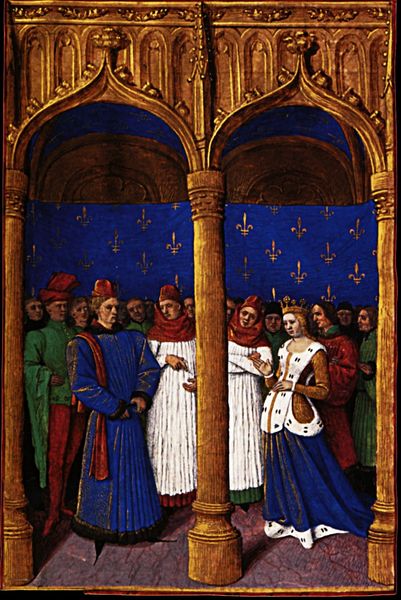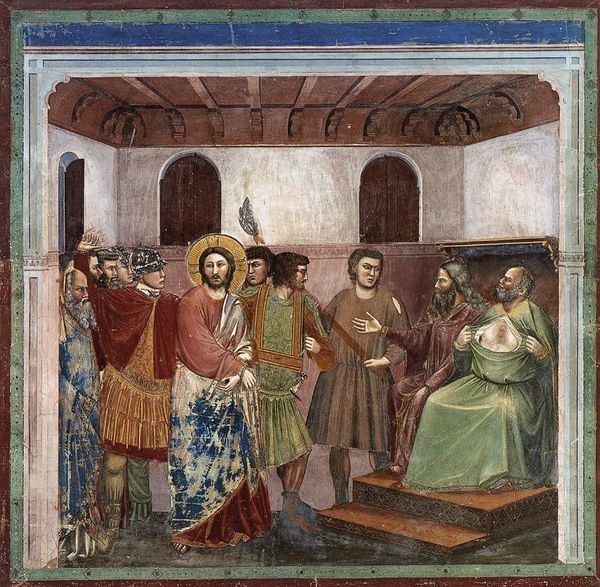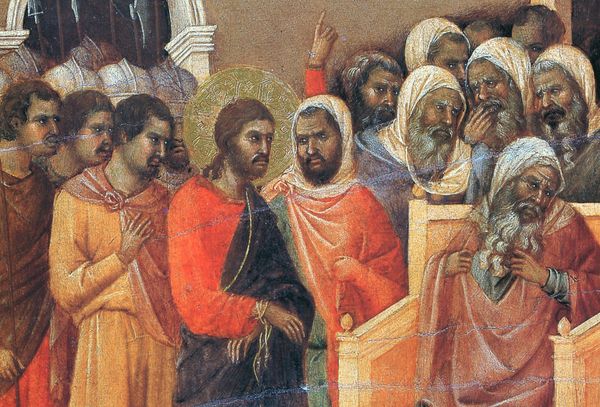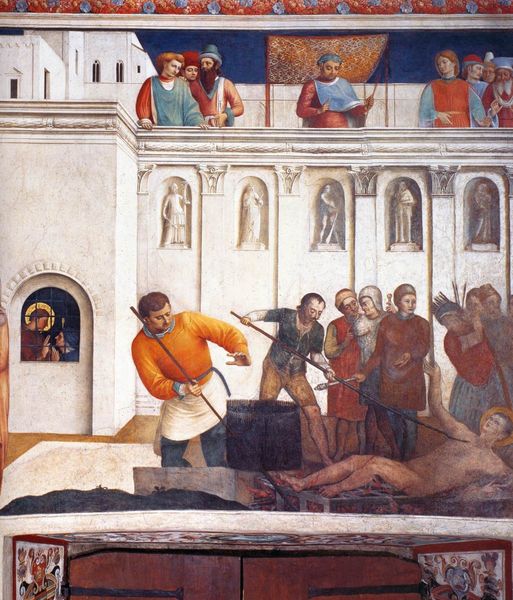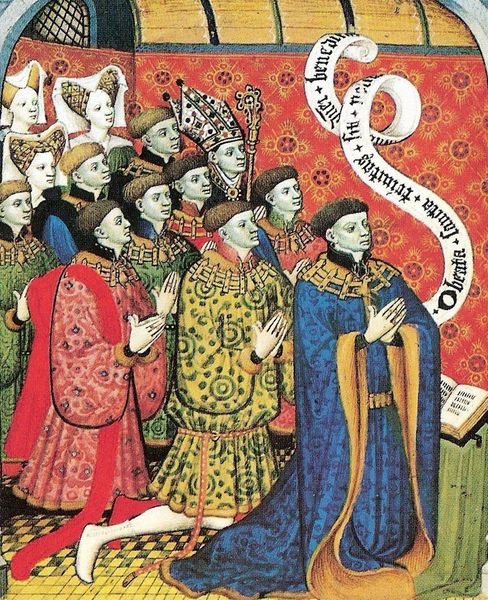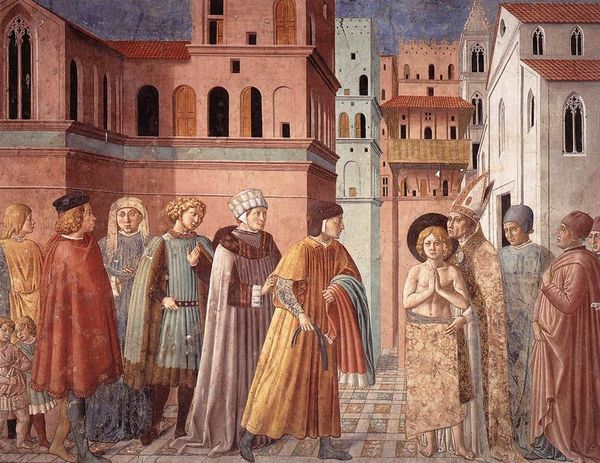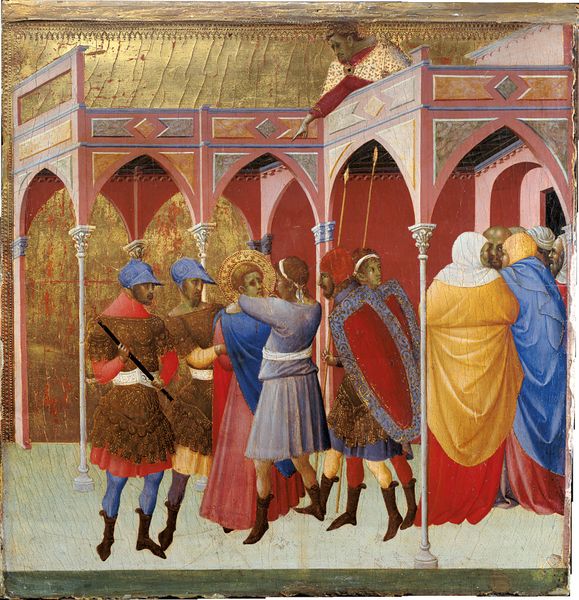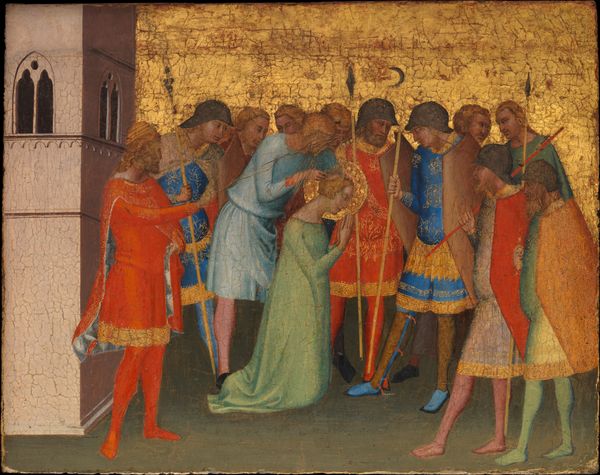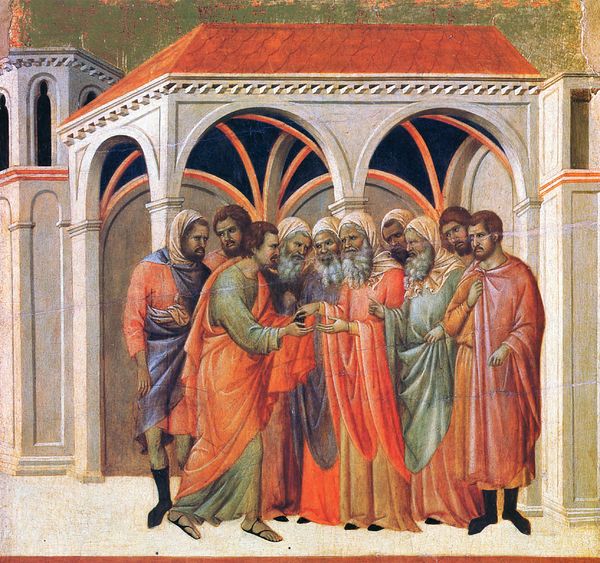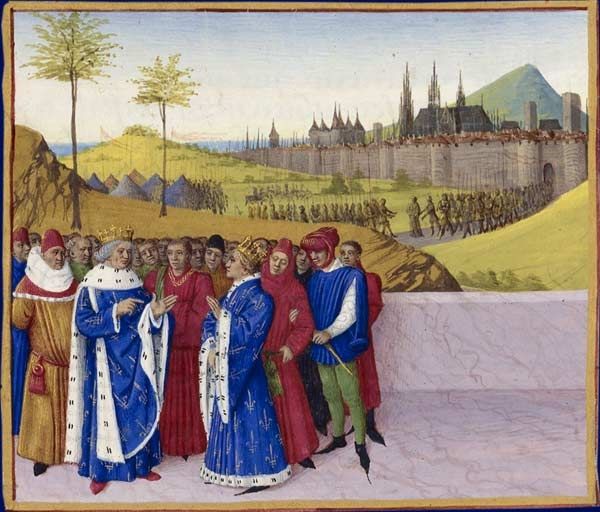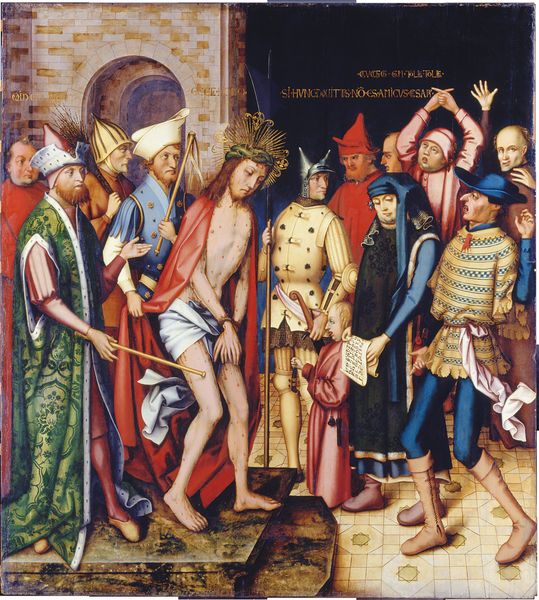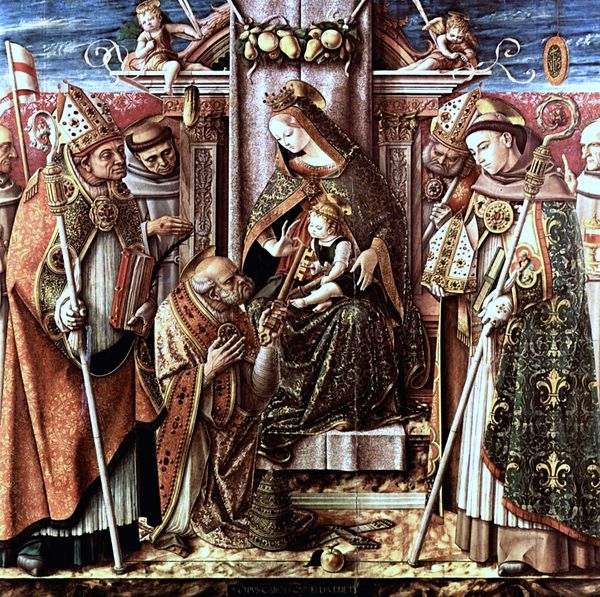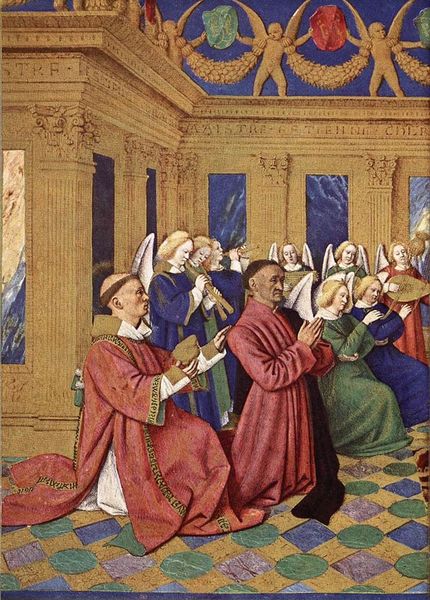
tempera, painting
#
portrait
#
narrative-art
#
tempera
#
painting
#
sienese-school
#
figuration
#
oil painting
#
jesus-christ
#
christianity
#
men
#
history-painting
#
italian-renaissance
#
portrait art
#
christ
Copyright: Public domain
Editor: This tempera on panel painting, "Christ in front of Anna" by Duccio, painted in 1311, portrays a tense and rather sorrowful moment. Christ stands bound before what I presume is Anna, surrounded by a jeering crowd. The gold leaf halo emphasizes his divinity in stark contrast to the figures around him. What do you see in this piece, considering its place in religious art history? Curator: I see a powerful visual echo, a layering of symbolic meaning meant to resonate deeply within the viewer. Duccio, here, isn't just depicting a scene, but invoking the weight of cultural memory associated with the Passion. Notice how Christ’s passive stance and downcast eyes become a recognizable symbol, representing submission and sacrifice. Even the surrounding figures become allegorical, embodying humanity's capacity for judgment and cruelty. What message does that repetition send, do you think? Editor: That repetition… it's like the painting becomes a symbol itself, representing not just *this* event but any situation where an innocent is persecuted. The halo reinforces his holiness, his 'otherness', to amplify the injustice. Curator: Precisely! And it invites the viewer to consider their own position within this timeless narrative. Are we the compassionate witnesses, or complicit members of the mob? This painting transcends the literal event to touch upon universal themes of power, justice, and faith. The iconographic power lies in its capacity to generate self-reflection. What did you find most impactful about that resonance? Editor: I think I’ll remember that interpretation of the surrounding figures. To me, they always seemed just to be part of the biblical narrative. Now I realize that they also function as symbols of the viewers of the time, and today.
Comments
No comments
Be the first to comment and join the conversation on the ultimate creative platform.
